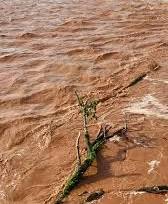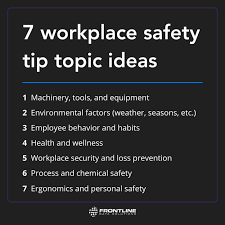The Impact of Flooding: Understanding the Causes and Consequences
Flooding is a natural disaster that affects millions of people worldwide each year. From destructive flash floods to prolonged river flooding, this phenomenon can have devastating consequences on communities, infrastructure, and the environment. Understanding the causes and consequences of flooding is crucial for effective preparedness and response efforts.
Causes of Flooding
Flooding can be caused by various factors, including heavy rainfall, snowmelt, storm surges, dam failures, and rapid urbanization. Climate change has also contributed to the increase in extreme weather events, leading to more frequent and severe flooding in many regions.
Consequences of Flooding
The consequences of flooding can be wide-ranging and long-lasting. Immediate impacts may include loss of life, damage to property, disruption of transportation systems, contamination of water sources, and displacement of communities. In the aftermath of a flood, affected areas may face challenges such as food shortages, disease outbreaks, economic losses, and psychological trauma.
Impact on Communities
Communities vulnerable to flooding often bear the brunt of its impact. Low-lying areas near rivers or coastlines are particularly at risk, as are regions with poor drainage systems or inadequate flood defenses. Vulnerable populations such as the elderly, children, and low-income families may face greater challenges in coping with the aftermath of a flood.
Preparedness and Mitigation Efforts
Effective preparedness and mitigation efforts are essential for reducing the risk posed by flooding. This includes early warning systems, emergency response plans, infrastructure improvements (such as levees and flood barriers), land-use planning regulations, community education programs, and sustainable water management practices.
Conclusion
Flooding is a complex natural hazard that requires a multi-faceted approach to address its causes and consequences. By understanding the factors that contribute to flooding and implementing proactive measures to reduce its impact, we can build more resilient communities that are better equipped to withstand future disasters.
9 Essential Tips to Stay Safe and Prepared During Floods
- Stay informed about weather forecasts and flood warnings in your area.
- Create an emergency plan with evacuation routes and meeting points.
- Prepare an emergency kit with essentials like water, food, medications, and first aid supplies.
- Keep important documents in a waterproof container or stored digitally.
- Avoid walking or driving through flooded areas to prevent accidents.
- Turn off utilities like gas, electricity, and water if instructed to do so by authorities.
- Seek higher ground during flooding if you are in a low-lying area.
- Do not let children play near floodwaters as they can be dangerous.
- After a flood, listen to authorities for information on when it is safe to return home.
Stay informed about weather forecasts and flood warnings in your area.
It is crucial to stay informed about weather forecasts and flood warnings in your area to effectively prepare for potential flooding. By staying updated on the latest information from meteorological agencies and local authorities, you can take proactive measures to protect yourself, your loved ones, and your property. Being aware of impending weather conditions allows you to make timely decisions and implement necessary safety precautions to mitigate the impact of flooding events. Stay vigilant and heed official warnings to ensure your safety during flood threats.
Create an emergency plan with evacuation routes and meeting points.
Creating an emergency plan that includes evacuation routes and designated meeting points is crucial in preparing for potential flooding incidents. By outlining clear escape routes and establishing meeting locations where family members or community members can gather safely, individuals can ensure a coordinated and organized response in the event of a flood. This proactive approach not only enhances safety but also helps minimize confusion and panic during emergencies, ultimately increasing the chances of a successful evacuation and reunification process.
Prepare an emergency kit with essentials like water, food, medications, and first aid supplies.
Preparing an emergency kit with essentials such as water, non-perishable food items, medications, and first aid supplies is crucial in ensuring readiness for potential flooding situations. Having these items readily available can make a significant difference in your ability to stay safe and healthy during an emergency. Water and food provide sustenance, medications cater to specific health needs, and first aid supplies can address injuries or medical emergencies that may arise. By proactively assembling an emergency kit, you can better protect yourself and your loved ones in the event of a flood.
Keep important documents in a waterproof container or stored digitally.
To safeguard important documents during flooding, it is advisable to store them in a waterproof container or have digital copies saved securely. This precaution can help protect vital records such as identification papers, insurance policies, and financial documents from water damage. By taking proactive measures to preserve critical information, individuals can mitigate the potential loss and facilitate smoother recovery efforts in the event of a flood.
Avoid walking or driving through flooded areas to prevent accidents.
To prevent accidents, it is crucial to avoid walking or driving through flooded areas. Floodwaters can be deceptively powerful and unpredictable, posing a significant risk to individuals who attempt to navigate through them. By heeding this advice and refraining from entering flooded areas, individuals can protect themselves from potential harm and ensure their safety during flood events.
Turn off utilities like gas, electricity, and water if instructed to do so by authorities.
During a flooding event, it is crucial to prioritize safety by following instructions from authorities. One important tip is to turn off utilities such as gas, electricity, and water if instructed to do so. By shutting off these services, you can help prevent potential hazards and minimize damage to your property. It is essential to act quickly and decisively in response to official guidance to ensure the well-being of yourself and your community during a flood emergency.
Seek higher ground during flooding if you are in a low-lying area.
During a flood, it is crucial to seek higher ground if you are in a low-lying area. Moving to elevated terrain can help ensure your safety and reduce the risk of being trapped or swept away by rising waters. By seeking higher ground, you can avoid potential hazards such as flash floods and swift currents that pose a serious threat to individuals in low-lying areas. Prioritizing your safety by relocating to higher ground during a flood is a proactive measure that can significantly increase your chances of staying out of harm’s way.
Do not let children play near floodwaters as they can be dangerous.
It is crucial to ensure the safety of children during flooding incidents by advising against allowing them to play near floodwaters. Floodwaters can pose significant risks, including fast currents, debris, and contamination, making them extremely hazardous environments for children. By keeping children away from floodwaters and educating them about the dangers associated with flooding, we can help prevent accidents and protect their well-being during emergency situations.
After a flood, listen to authorities for information on when it is safe to return home.
After a flood, it is crucial to listen to authorities for guidance on when it is safe to return home. Government agencies and emergency responders have the expertise to assess the risks and ensure that conditions are suitable for residents to re-enter their homes safely. Following their instructions helps protect individuals and families from potential hazards such as contaminated water, structural damage, or other dangers that may persist after a flood. By heeding official advice, individuals can prioritize their safety and well-being during the recovery process.




